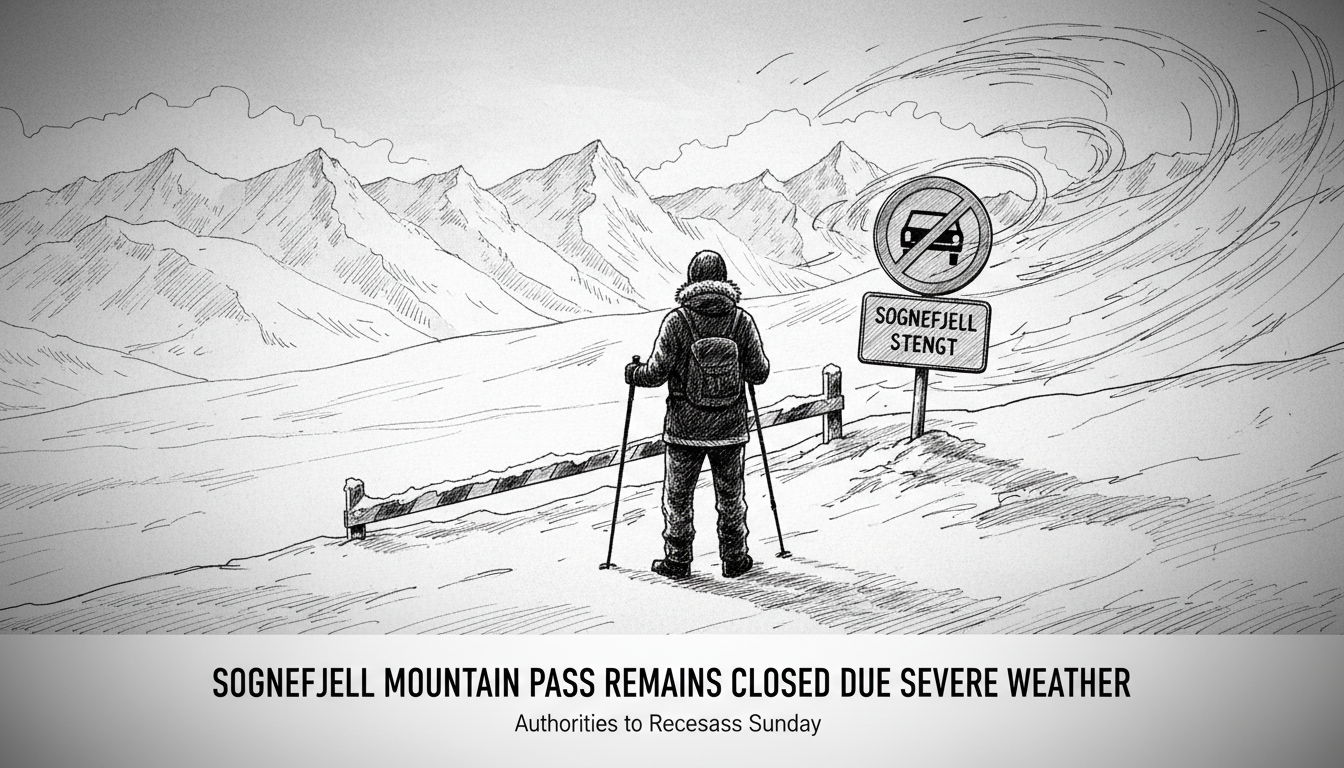The Sognefjell mountain pass on National Highway 55 remains closed for travel this weekend. Road authorities made this decision after evaluating dangerous weather conditions overnight. The closure affects one of Norway's most important alpine routes during the peak travel season.
Road maintenance officials will reassess the situation on Sunday morning at 8:00. They announced this timeline through their official social media channels. All other mountain passes in the region currently remain open to traffic. The only exceptions are routes that typically close for the entire winter season.
This highway serves as a critical transportation corridor through Norway's mountainous interior. It connects eastern and western regions of the country through the Jotunheimen mountain range. The pass reaches elevations exceeding 1,400 meters above sea level. These high altitudes make it particularly vulnerable to sudden weather changes.
Mountain road closures present significant challenges for Norwegian transportation. They disrupt commercial shipping routes and affect tourism movements. Many travelers plan their journeys around these alpine crossings during summer months. The timing of this closure during a weekend creates additional complications for weekend travelers and local businesses.
Why does this closure matter beyond immediate travel disruptions? Norway's mountain passes represent vital infrastructure for both local communities and the national economy. They enable goods transportation between coastal and inland regions. They also support the country's substantial tourism industry during the short summer season.
Norwegian authorities maintain strict safety protocols for mountain roads. They prioritize driver safety over convenience during adverse conditions. This approach reflects Norway's comprehensive transportation safety culture. The country invests heavily in road maintenance and weather monitoring systems.
The current situation demonstrates how quickly weather can change in Scandinavian mountain regions. Summer storms can bring snow even in July and August. Travelers should always check road conditions before embarking on mountain routes. They should also prepare for sudden weather changes with appropriate clothing and emergency supplies.
What happens next for the Sognefjell pass? Road crews will monitor conditions throughout the weekend. They will clear any snow accumulation and assess ice formation. The Sunday morning evaluation will determine when the route can safely reopen. Travelers should consult official road information sources before planning their journeys.
This incident highlights the ongoing challenges of maintaining transportation infrastructure in Norway's dramatic landscape. The country balances accessibility with safety in some of Europe's most demanding terrain. The temporary closure shows this system working as intended - protecting travelers from potentially dangerous conditions.

